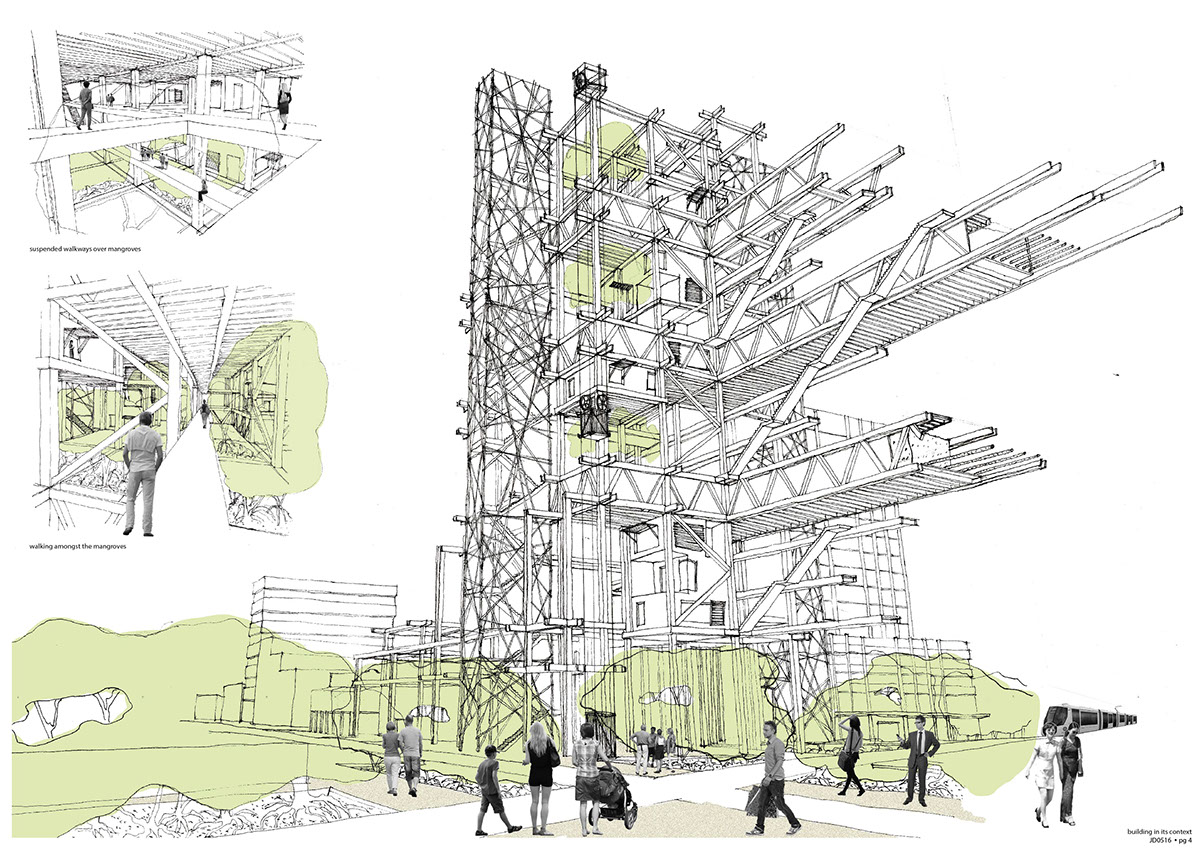DURBAN AS A SUSTAINABLE MANGROVE FOREST
The growing need for sustainable housing in Durban is ever more crucial as the city will see drastic population growth, expecting numbers to rise by 1million people by 2030. The diminishing natural resources world-wide calls for ingenuity in the use of natural resources as structural building materials in order to sustain this population boom. A possible solution to this in Durban is sustainable managed mangrove forests.
WHY?
Mangroves exist and thrive within the hot humid climate belt of the world with evidence of rapid growth, however there has been a substantial decrease in mangrove forests within the past 150years due to deforestation for capital gain and land reclamation for infrastructure, this is partly a result of information failure, due to lack of knowledge about mangroves, market failure, due to un-realised potential of mangroves; incorrectly valuing the mangrove ecosystem and intervention failure, due to governmental laws and regulations that lease mangrove land at extremely low rates or only issue fines that barely dent the pocket of a willing developer.
Building affordable housing out of timber from sustainable mangrove forests will allow for; housing to be provided in Durban built from locally sourced timbers. Natural mangrove forests will also start regenerating across the world because the possibilities of mangroves and their importance will be valued, not only as a material, but as an affordable home for all.

INTEGRATION
By 2050 Durban will be a sustainable mangrove forests. The climate of Durban and what Durban was before makes it possible to grow a sustainable mangrove forest in the city, the northern parts of KwaZulu-Natal and the Eastern Cape. The building draws inspiration from the African stilt hut, which is an architecture that is designed to function well as shelter that is integrated into the marshy lands of mangroves, connected by a series of walkways.
By 2050 Durban will be a sustainable mangrove forests. The climate of Durban and what Durban was before makes it possible to grow a sustainable mangrove forest in the city, the northern parts of KwaZulu-Natal and the Eastern Cape. The building draws inspiration from the African stilt hut, which is an architecture that is designed to function well as shelter that is integrated into the marshy lands of mangroves, connected by a series of walkways.

INNOVATION
The building is constructed out of timber sourced from sustainable mangrove forests. The possibilities of mangrove timbers and its potential has not been realised in high-rise construction, so this building will serve as a catalyst by; promoting the possibilities of building affordable housing out of timber grown from sustainable mangrove forests.

STRUCTURE
The structural timber frame is designed to accommodate the prefabricated composite mangrove timber panels that allow for flexible architecture and space. The concept of living amongst the mangroves is enhanced by providing people with a home inhabited around, over and in the mangroves at multiple levels within the building and the city, supported by large lattice structures.

ENVIRONMENTAL STRATEGY
The building takes advantage of the potential of the mangrove forest by showcasing the importance of the mangrove ecosystem through; mangrove regeneration; water recycling and cleaning and carbon sequestration, all of which is catalysed by this high-rise.
The building takes advantage of the potential of the mangrove forest by showcasing the importance of the mangrove ecosystem through; mangrove regeneration; water recycling and cleaning and carbon sequestration, all of which is catalysed by this high-rise.
In order to resolve issues of climate change, rising sea levels and population growth, we need to investigate other means of systems. We need to synthesise and be open to possibilities and change, so why not sustainable mangrove forests






